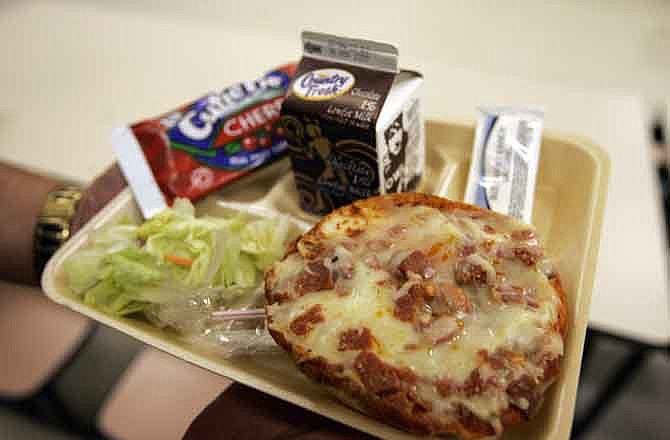Missouri ranks 14th in the latest edition of the annual School Breakfast Scorecard, produced by the Food Research and Action Center (FRAC).
FRAC is a national anti-hunger advocacy group, and its scorecard ranks all 50 states and the District of Columbia on participation of children from low-income families in the national School Breakfast Program (SBP).
In Missouri, the FRAC scorecard found 228,397 kids from low-income families received breakfast through the program on an average day - a 2.4 percent increase in participation over the previous year.
Put another way, the report found for every 100 Missouri children getting free or reduced price school lunch, 59.3 received free or reduced price breakfast during the 2015-16 school year. The national average in the same time period was 56 per 100. FRAC's goal is to have 70 children receive breakfast per 100 who receive lunch.
"We are delighted to see our state make progress toward good nutrition for all our
children, Jeanette Mott Oxford said in a news release.
Oxford is the executive director of Empower Missouri - one of several nutrition and education organizations in the Partners for Breakfast in the Classroom consortium that seeks to increase participation in the SBP by implementing alternative ways to get food to kids in schools, like serving breakfast before school starts or offering "grab and go" options.
Jefferson City Public Schools district CFO/COO Jason Hoffman explained students who qualify to receive breakfast or lunch for free or at a reduced price also qualify to get the other meal at the same rate.
In the JCPS district, Director of Assessment and Planning Dawn Berhorst said 5,240 students received free or reduced price breakfast and lunch as of the last Wednesday in January.
That is the highest number of students to receive free or reduced price meals since at least the 2011-12 school year, according to a comparison with data from the Missouri Department of Elementary and Secondary Education (DESE).
January enrollment in the district is reported on the JCPS website this year as 8,676, meaning about 60 percent of students receive free or reduced price breakfast and lunch.
Every student at the Callaway Hills, East, South and Thorpe J. Gordon elementary schools is automatically eligibile to receive free breakfast and lunch because of those buildings' participation in the Community Eligibility Provision program, which began in the 2015-16 school year.
As of the last Wednesday in January, Blair Oaks Superintendent James Jones reported 133 students received free or reduced price meals in the district. That number was 153 the same time last year.
The number in the Blair Oaks district this year is the lowest since the 2012-13 school year, according to DESE data.
Jones said as of last September, 1,195 students are enrolled in the district. This means about 11 percent of students receive free or reduced price meals.
The School Breakfast Program is administered on the federal level by the U.S. Department of Agriculture's Food and Nutrition Service; it provides cash assistance to state education agencies. Those state-level agencies in turn give public school districts, nonprofit private schools and residential child care institutions the funds to operate nonprofit breakfast programs in their buildings. The program has been permanent since 1975.
In exchange for receiving the cash subsidies from the USDA for each free or reduced price meal served, meals must meet federal requirements of nutrition, with an increasing emphasis in recent years on less trans fats, sodium and calories, and more whole grains and fruit.
Including the hundreds of thousands of kids from low-income families who receive free or discounted meals daily, DESE reported that just between July and December 2016, 21.8 million breakfast meals were served to Missouri kids in total.
DESE also reported a 230,934 average daily participation rate for kids of low-income families.
West Virginia came in first on FRAC's latest scorecard, with a rate of 83.9 students receiving free or reduced price breakfast per every 100 who receive free or discounted lunch. The other states ranked above Missouri, in order are New Mexico, the District of Columbia, Tennessee, Maryland, Kentucky, Arkansas, Texas, Vermont, South Carolina, Connecticut, Colorado and Idaho.
New Hampshire came in last, with 40.9 students receiving breakfast through the School Breakfast Program for every 100 who receive free or discounted lunch.

